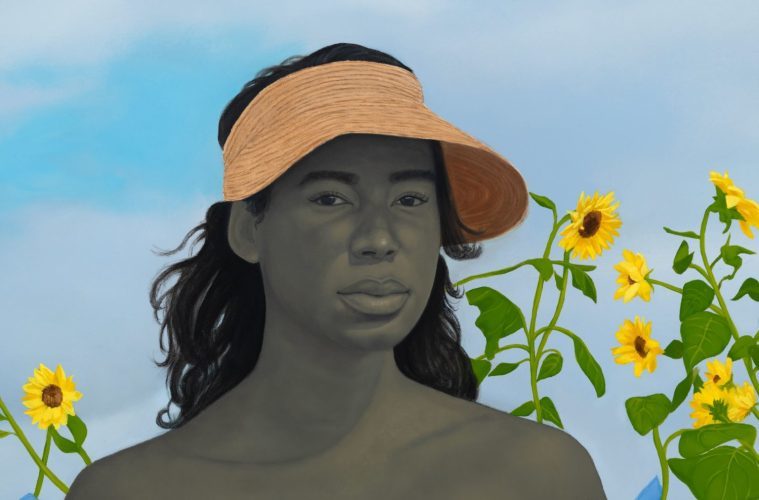Walking into the galleries at Hauser & Wirth Los Angeles right now is like walking into summer. A new suite of just five paintings (three quite large) by Amy Sherald radiate from the broad clean walls, where her subjects pose with sunflowers and bicycles and flowing blue dresses, surf gear, muscle cars, kitten heels and sunshine. It’s a pageant of gloriously ordinary American life. All the people in the paintings are Black; all the simple blue-sky pleasures on offer are universal.
As Sherald is best known for her celebrated portraits of Michelle Obama and Breonna Taylor, it’s tempting to see these compositions as portraits as well. There’s a certain relationship to selfies and other tropes of vernacular photography – for example, the pure joy of a cute head-to-toe pink look and a shiny car at the end of the driveway in As American as apple pie, or the feeling-myself jaunt of someone in their new favorite shirt in A bucket full of treasures (Papa gave me sunshine to put in my pockets…). The regal, rural peace of A Midsummer Afternoon Dream especially makes you want to know more about the stylish cyclist and her picturesque world and adorable dog.
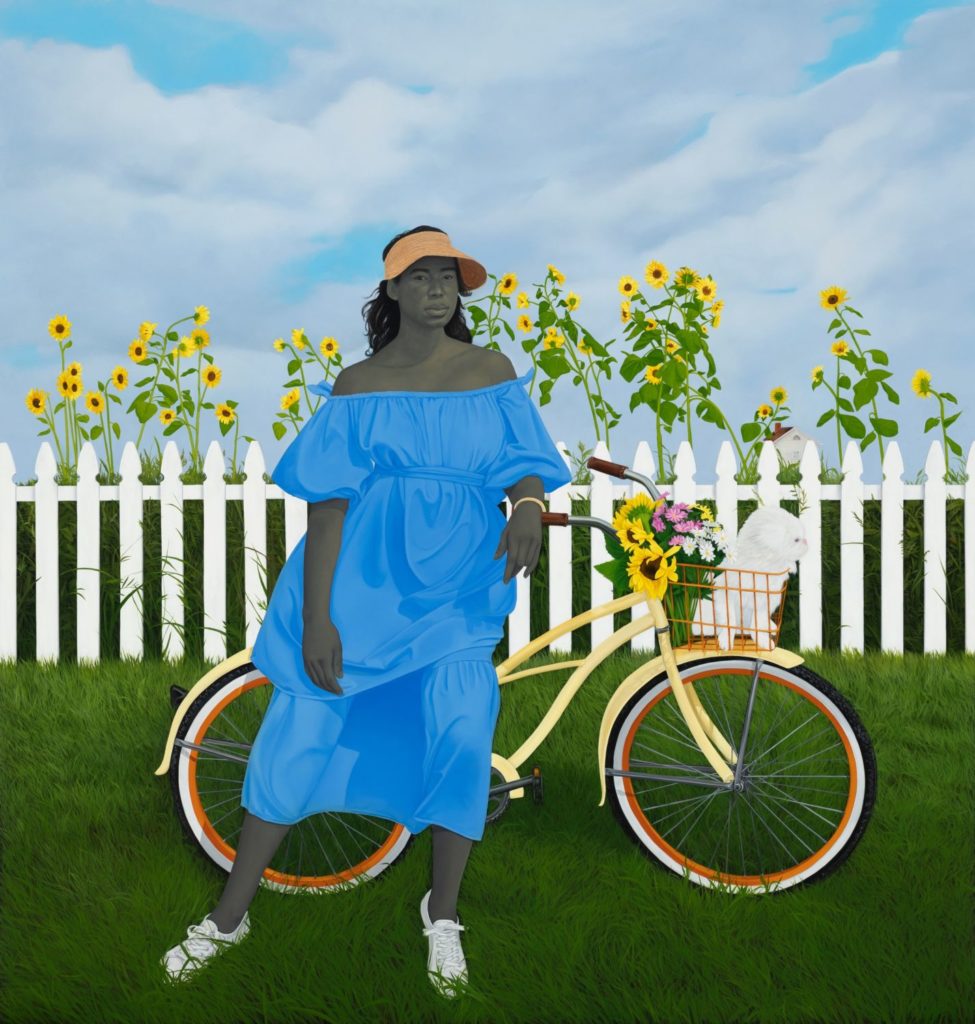
Amy Sherald, A Midsummer Afternoon Dream, 2020, Oil on canvas, 106 x 101 x 2 1/2 in. (© Amy Sherald. Courtesy the artist and Hauser & Wirth. Photo: Joseph Hyde)
“I have to say that when I look at these paintings that I make, I don’t see them as portraits,” Sherald tells the Weekly. “Once I photograph the model and start making the painting, they stop being themselves and they start to represent something else. The work itself I think sits more conceptually within the American art canon. I consider myself an American Realist and somebody that paints about American experiences – of which the Black experience is a subset,” albeit both an integral and perniciously othered one.
When this conversation about Americanism started for Sherald, she was abroad and somebody said something derogatory about America and they addressed her as an American. She had this moment of epiphany that she was being conflated with all Americans – assumed to be just a random American like any other – in a way that was both troubling and way more equalized than what she experienced at home, where her Americanness was under constant question. “To be forced to experience such diametrically opposed emotions in a single moment was freeing,” she says. “It’s like, you figure out the shape of your Americanness only when you leave America and get that perspective.”
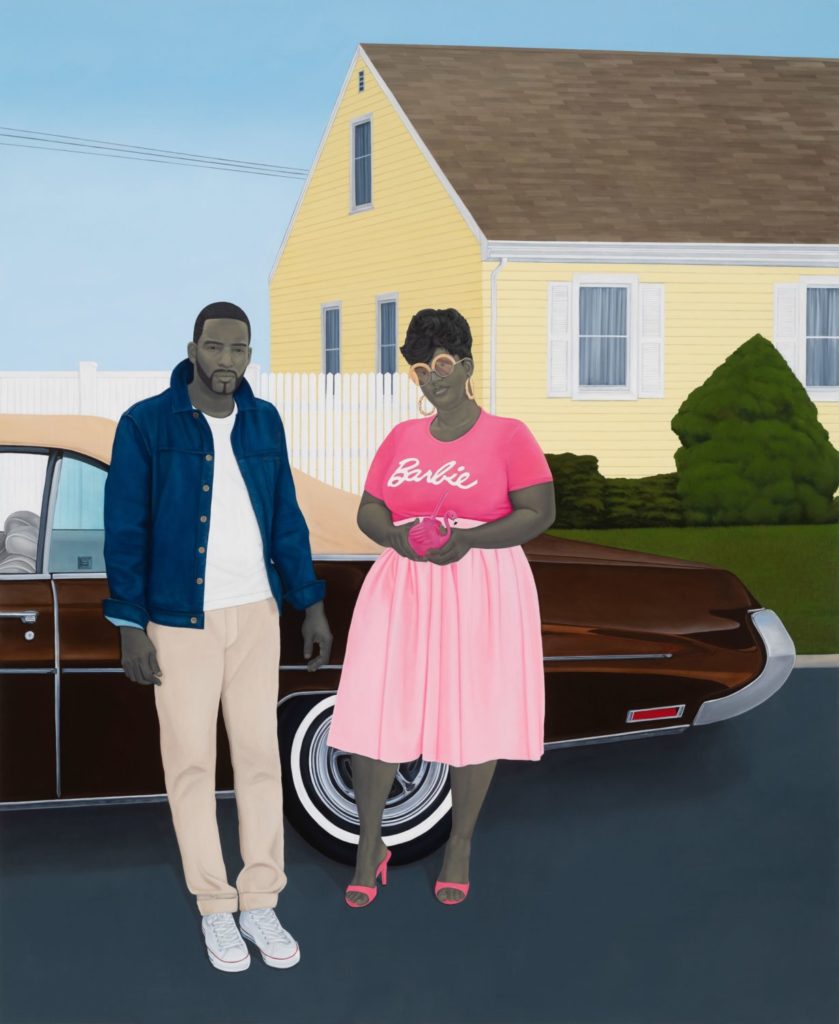
Amy Sherald, As American as apple pie, 2020, Oil on canvas, 123 x 101 x 2 1/2 in. (© Amy Sherald. Courtesy the artist and Hauser & Wirth. Photo: Joseph Hyde)
This idea about joy and banality, about belonging to America, is a discourse that is as urgent as her paintings are serene. It is a tall order, decolonizing Western art history, but it has to happen. The question is, by what means. “The American story has to include all Americans,” Sherald says. “Black people live out our lives in the most mellow and boring ways, just like everyone. It’s not always a moment of resistance, anger and grief. That’s a huge part of our narrative from the time we came across through the Middle Passage to now, but it’s like, we are kaleidoscopic, full humans.”

Amy Sherald, Hope is the thing with feathers (The little bird), 2020, Oil on linen, 54 x 43 x 2 1/2 in. (© Amy Sherald. Courtesy the artist and Hauser & Wirth. Photo: Joseph Hyde)
This statement is delivered in Sherald’s work with thoughtful familiarity and intentionally off-kilter but always pleasant nuance. Her relationship to Americana includes a sort of quasi-abstract, color-driven approach to rendering full figures in flat pictorial space and other schematic stylizations – all of which meshes perfectly with our post-photography visual culture. Color and abstraction in Sherald’s style perform a sort of parallel narrative to the imagery, telling an intuitive and emotional story, creating within a harmonious arrangement of shapes a tender, balanced sensation – what Sherald calls “the sweet sound,” the feeling of which is how she knows when a painting is finished.
In service of this, her striking and slightly eccentric palette is her own invention; sometimes she even creates and names new colors in tandem with the paintings themselves, like Camaro Orange, or Two If By Sea. “These colors kind of tell little stories too,” she says. “I think it’s all the same. Even when I look at abstraction, the way that one color plays into another color, there’s a kind of symmetrical narrative there. So, I think the way that I approach my work and the way that I approach color is the same way that somebody would make a painting that’s based on abstraction, because for me it’s totally intuitive. There’s a lot of non-verbal, really spiritual moments happening in the process. I feel like the painting becomes the director of me, in a way.”
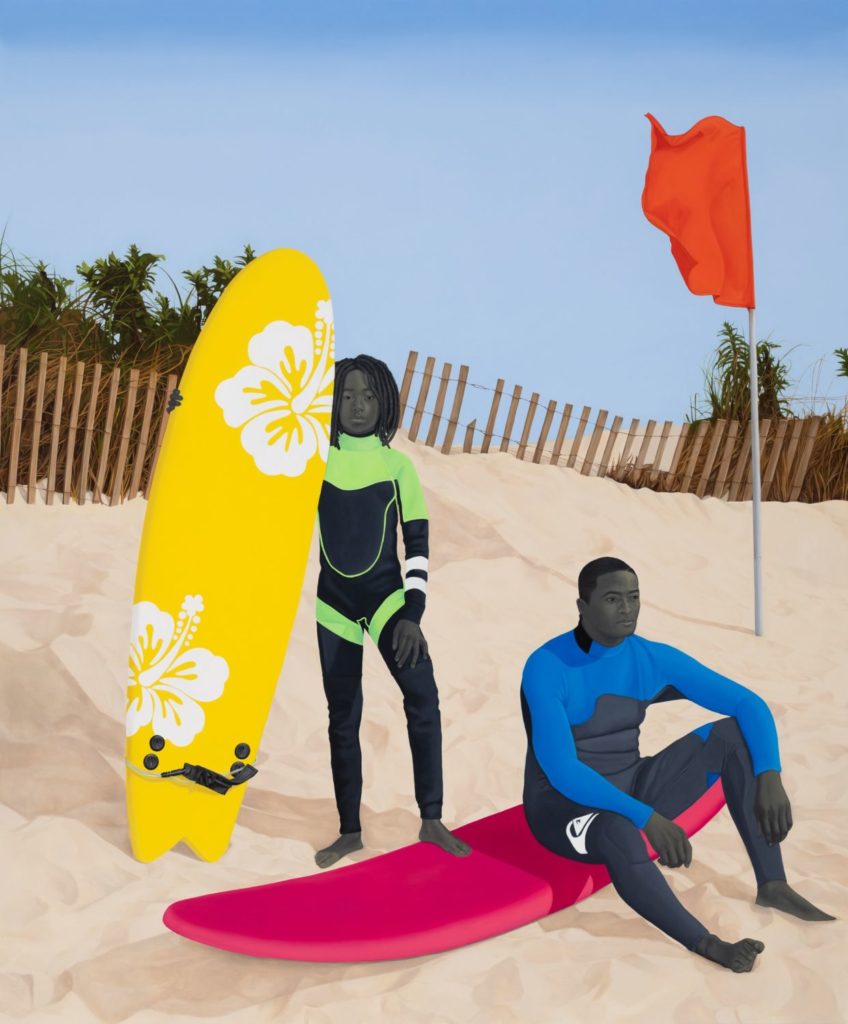
Amy Sherald, An Ocean Away 2020, Oil on canvas, 130 x 108 x 2 1/2 in. (© Amy Sherald. Courtesy the artist and Hauser & Wirth. Photo: Joseph Hyde)
So, what can viewers glean as to Sherald’s current state of mind from the bright, bold, upbeat palette of “The Great American Fact” paintings? “You know, somebody asked me, how my work could juxtapose to this year of calamity,” Sherald shares. “And my response is like, how much of your life do you want to allocate grief? And these paintings are just light, moments of pleasure and leisure and joy – because life has to have balance. And we have to have time to breathe. And I think, for me, they were a part of taking care of my own well-being and my own mental health. I needed to see this work, too.”
Amy Sherald: The Great American Fact is on view by appointment through June 6 at Hauser & Wirth Los Angeles, in the downtown Arts District; free; hauserwirth.com.
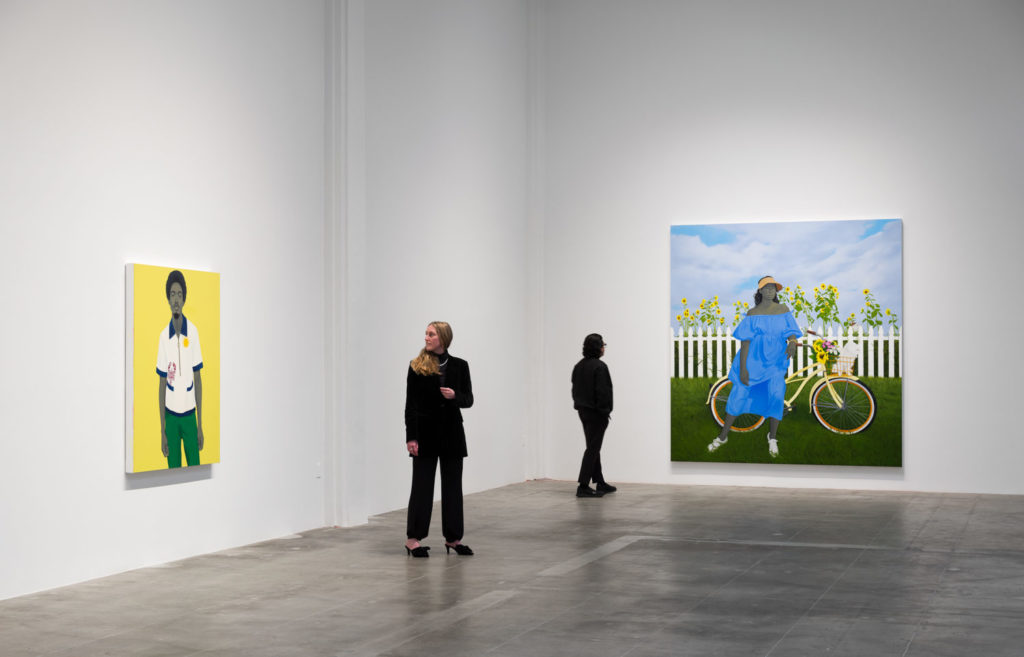
Installation view, Amy Sherald. The Great American Fact, Hauser & Wirth Los Angeles, 2021. (© Amy Sherald. Courtesy the artist and Hauser & Wirth. Photo: Fredrik Nilsen Studio)
Advertising disclosure: We may receive compensation for some of the links in our stories. Thank you for supporting Irvine Weekly and our advertisers.

